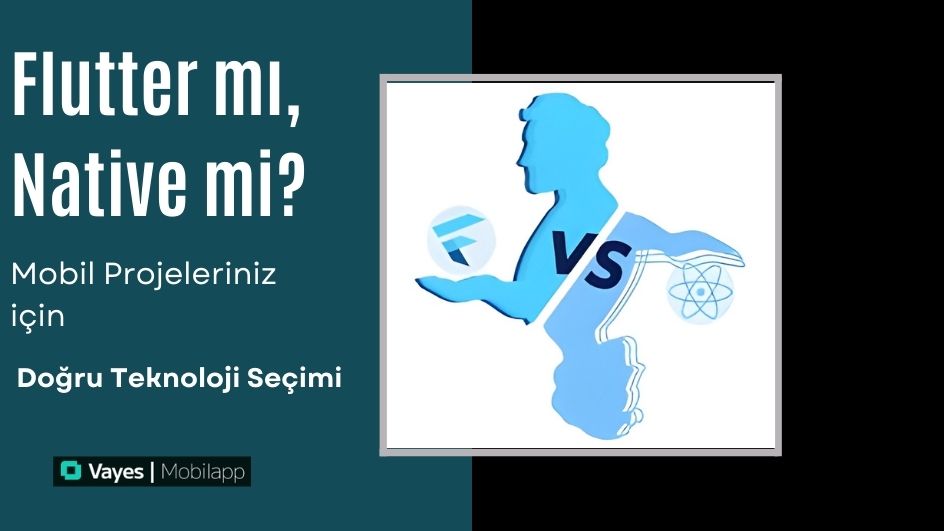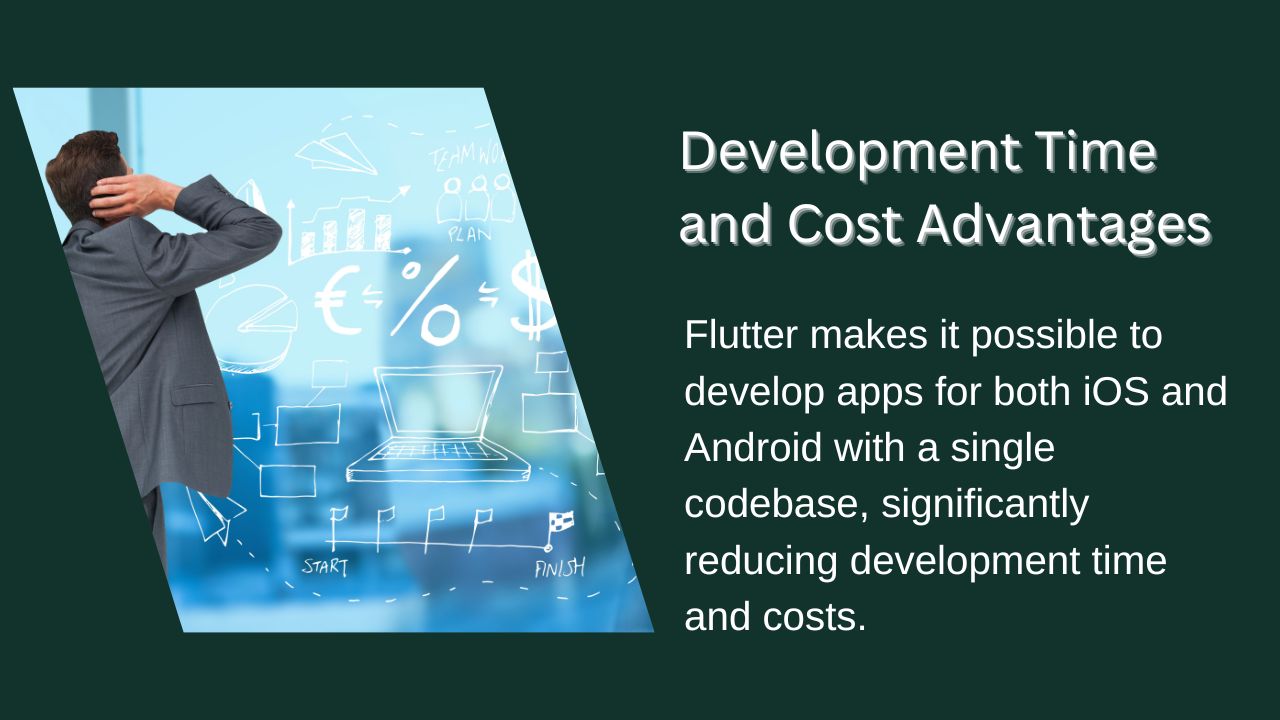Hello,
How Can We Help You?
Contact Form
Fill out the form and we will contact you as quickly as possible.
|

Flutter is an open-source UI toolkit developed by Google, enabling the creation of applications for both iOS and Android with a single codebase. It uses the Dart programming language and is designed for cross-platform development. On the other hand, native development involves building applications with separate codebases for each platform, using Swift or Objective-C for iOS and Kotlin or Java for Android. Flutter offers developers a faster development process, while native development focuses on achieving the highest performance and deep integration with the platform. In terms of development time and cost, Flutter has an advantage as it allows a single codebase to work across multiple platforms. However, native development provides a more optimized experience by directly accessing the device’s hardware and operating system. For example, a Flutter app can maintain the same appearance on both platforms, whereas native development ensures full adherence to each platform’s design standards. The choice between these two technologies depends on the specific needs of a mobile project.
Native development holds a clear advantage over Flutter in terms of performance and speed. Native apps have direct access to the device’s hardware and operating system, enabling them to run faster and consume fewer resources. For instance, a gaming app developed with native development delivers superior graphics performance and response times. Flutter operates with an intermediary layer (the Skia graphics engine), which can lead to some performance overhead. Particularly in apps requiring complex animations or high computational power, native development yields better results. However, Flutter has significantly improved its performance in recent years and provides adequate speed for many applications. From the perspective of development time Flutter is faster since it allows app development for iOS and Android with a single codebase. Native development, on the other hand, requires separate optimizations for each platform, which takes more time. If performance is a critical priority, native development should be preferred.
Native development excels in delivering a superior user experience by fully adhering to the design standards of iOS and Android platforms. iOS apps can follow the Human Interface Guidelines for a minimalist and smooth interface, while Android apps can align with Material Design for a vibrant and flexible experience. This ensures users feel the app is natural and familiar. For example, a navigation bar in iOS operates differently than in Android, and users expect this distinction. Flutter aims to provide a consistent design across platforms. Its widget-based structure offers developers significant design flexibility, allowing for fully customized interfaces. However, this can sometimes fall short of meeting platform-specific user expectations. For instance, in a Flutter app, creating a natural scrolling feel for iOS users may require extra effort. Native development leverages platform-native components to provide a smoother experience. While Flutter saves development time user experience takes precedence, making native development a better choice.

Development time and cost are among the most critical factors in mobile project development, and Flutter offers a significant advantage in this area. Flutter enables app development for iOS and Android with a single codebase, substantially reducing both development time and costs. For example, a developer can write code in Flutter and deploy it on both platforms, allowing for faster project completion. In contrast, native development requires separate codebases for each platform, which demands more time and resources. For instance, it may necessitate two separate teams—one proficient in Swift for iOS and another in Kotlin for Android. However, native development can require less maintenance in the long run since it adapts more quickly to platform updates. Flutter projects, due to their cross-platform nature, may occasionally encounter platform-specific bugs, resolving which can incur additional costs. For small to medium-scale projects, Flutter’s development time advantage makes it a preferred choice, while native development may be more suitable for large and complex projects.
Native development has a significant edge over Flutter when it comes to accessing platform-specific features. Native apps can directly interact with the device’s hardware and operating system, offering deeper integration. For example, in iOS, an app can easily integrate with Face ID, Apple Pay, or HealthKit, while in Android, features like NFC, sensors, or Google Fit can be seamlessly utilized. Flutter accesses such features through platform channels, but this requires additional development effort and can sometimes lead to performance losses. For instance, using iOS’s ARKit features in a Flutter app may require writing native code. iOS and Android platforms offer rapid access to their latest features through native development, ensuring the app remains functional and up-to-date for users. While Flutter saves development time native development is preferable when platform-specific features are critical.
There are notable differences between Flutter and native development in terms of community support and ecosystem richness. Flutter, backed by Google, has a rapidly growing community. Its package ecosystem (pub.dev) offers thousands of ready-to-use packages, enabling developers to accelerate their projects. However, being a relatively new technology, Flutter’s ecosystem is not as mature as that of native development in some areas. Native development has been around for years and boasts extensive community support for iOS and Android For example, iOS has CocoaPods, and Android has Gradle, providing access to thousands of libraries and tools. This makes it easier to find resources and support for native development projects. Development time benefits from Flutter’s ready-made widgets and packages, but native development offers more control and support for complex projects. Developers should evaluate the community support of these technologies based on their project’s needs.
Flutter and native development will continue to address different needs in the mobile app development landscape. Flutter is seen as the future of cross-platform development and is rapidly evolving with Google’s continuous investments. For instance, Flutter now supports web and desktop applications, making it suitable for a broader ecosystem. Native development will maintain its leadership in performance and access to platform-specific features. Technologies like AI, augmented reality, and 5G are influencing both approaches. For example, Flutter supports augmented reality apps through platform channels with native integrations, while native development offers direct access to these technologies. As iOS and Android platforms continue to introduce new features, native development can adapt more quickly to these innovations. For projects prioritizing development time and cost benefits, Flutter is an ideal choice, while native development is better suited for projects requiring high performance and deep integration. Both technologies will play significant roles in the future of mobile app development.
Contact Form
Fill out the form and we will contact you as quickly as possible.
 Notification Center 00:00
Notification Center 00:00